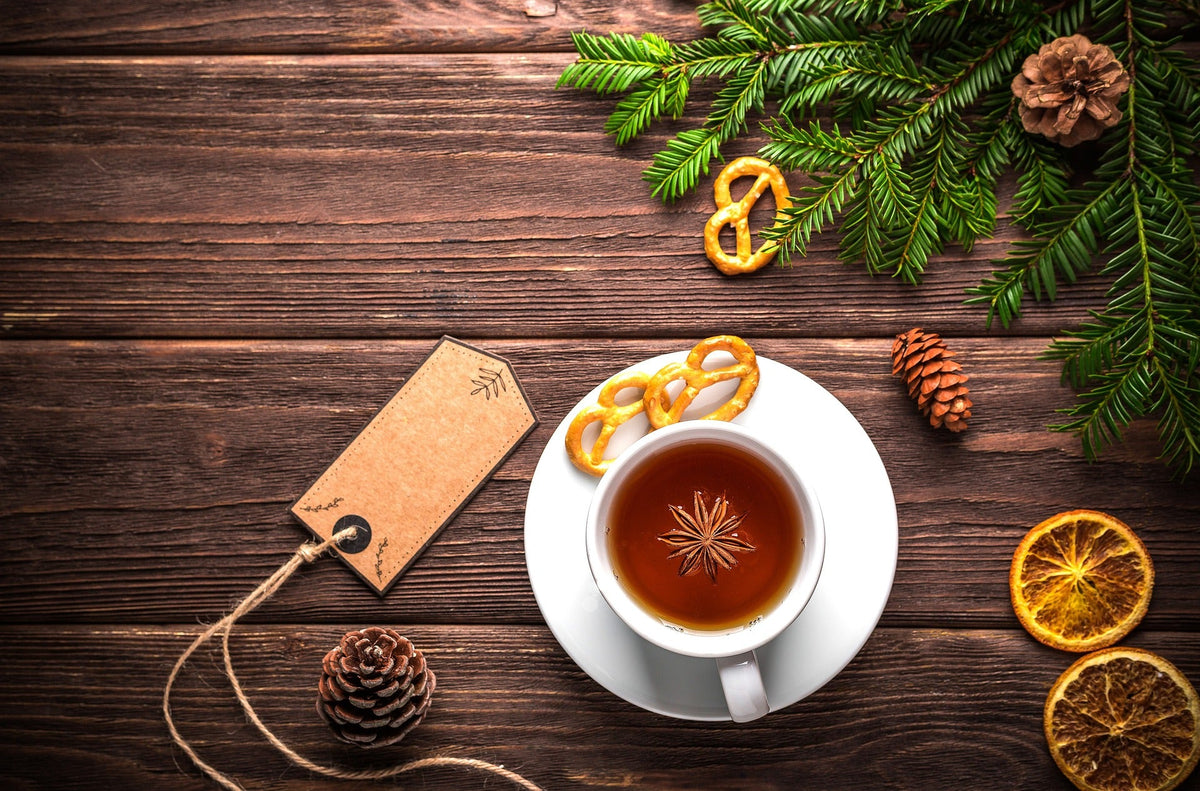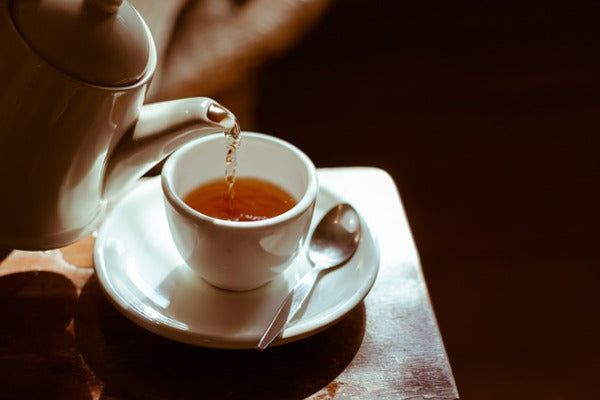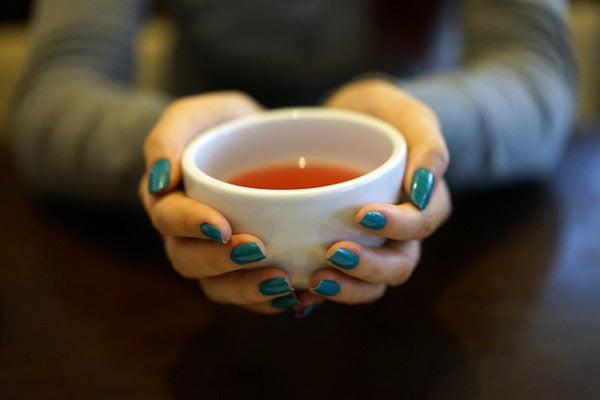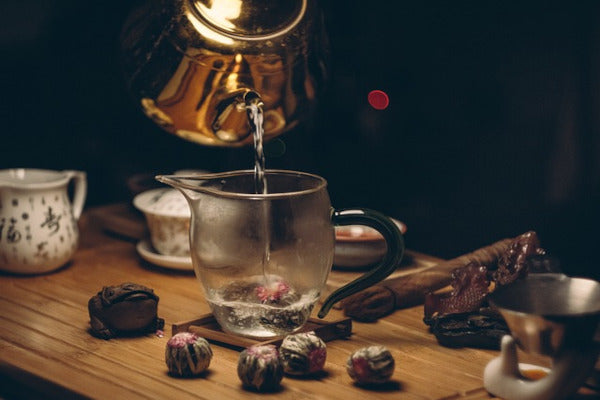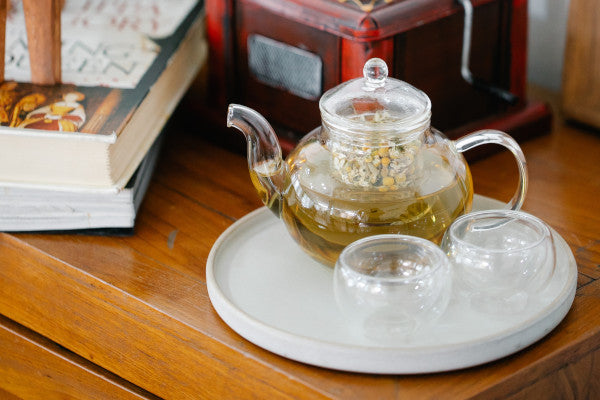Matcha has captured the world's attention for its aroma and flavor. It's everywhere, everyone talks about it; some prefer it for its ritualistic quality, while others lean toward its antioxidant properties and great culinary versatility. This matcha green tea is experiencing its golden age, which is why in this article, you'll find out what the properties of matcha tea are and how to take advantage of its benefits for your health.
Do you want to learn more about this matcha tea? What properties does it have? How is it made? Where does it come from? What benefits does it have? These are questions whose answers you'll find here. Read on and discover the enormous qualities of this green tea.
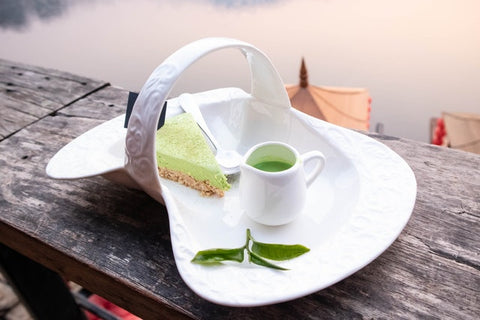
What is Matcha Tea Made Of?
This Matcha green tea is a pure Japanese tea made from the buds and leaves of the Camellia sinensis plant , which are used in the production of high-quality green teas. These include gyokuro and certain varieties of sencha. This beverage is gaining increasing popularity for its health benefits.
Matcha tea is a ground green tea. Unlike traditional tea infusions, the whole leaves are usually dissolved and consumed in hot water. Its preparation is ancient, and although there is no scientific evidence of its health effects, some claim it has properties and benefits. Let's see how to prepare matcha tea .
The tea plants are placed in the sun for two weeks before harvesting, then mature in the shade. This allows the plants to produce more chlorophyll, resulting in a more intense color. The leaves are then harvested, and the buds are steamed to prevent further oxidation.
They are cleaned of veins and gradually ground in volcanic rock cylinders until they become a very fine, shiny powder with a slightly bitter taste. Furthermore, since they are ground whole leaves, matcha retains its aromas and flavors of the camellia, as well as its properties. But are all matcha the same?

Origin of Matcha Tea
Matcha dates back centuries, dating back to the Tang Dynasty in China. The tea was introduced to Japanese culture through Zen Buddhism. Over time, its popularity faded in China, but its production was beginning to gain ground in Japan. However, it wasn't until the 14th and 16th centuries that its popularity reached Japanese high society.
Matcha tea comes from the Camellia sinensis plant, a shrub originating in southern China. The word Matcha has meaning; in Japanese, "ma" means powder and "cha" means tea, so its literal meaning is powdered green tea. It is said that in 1191 AD, the Zen monk Eisai brought the first seeds of this green tea from China to Japan, planting them on temple grounds in Kyoto.
The Zen Monk was responsible for introducing Zen philosophy to Japan, and the first person to grind and consume green tea leaves in powder form. It was at this moment that Zen and Matcha were united through an exquisite tea ceremony. It is a ceremony that celebrates the beauty of simple things, the grandeur in the ordinary, and with a firm intention of bringing those who participate closer to the here and now.
The physiological benefits of Matcha tea, envisioned by Japanese scholars, are being proven by modern science. More and more studies are emerging that indicate the significant benefits of matcha green tea .

How many types of Matcha Tea are there?
Not all matcha is created equal. The highest quality varieties are those made from the leaves and buds of the first harvest. These are used in the Japanese tea ceremony, also known as cha no yu.
On the other hand, third- and fourth-harvest matchas, which are characteristically pale and bitter, are used for culinary purposes. These are usually powders labeled as "matcha drinks." They are green tea, but they are usually leftovers from low-quality tea mixed with artificial flavorings, sugar, and dairy products.
More and more consumers are choosing organic products, which is why some companies offer three different versions of their organic matcha tea. These grades are: ceremonial grade, intermediate grade, and basic grade.
The "organic" technique is new, as current marketing trends favor this term, which is always a better option. Certified organic teas are grown and harvested, in most cases, without the use of insecticides, artificial chemical sprays, or additives.
- Ceremonial grade. This type of tea is best consumed plain, without any additional ingredients or sweeteners. It's not recommended to mix it with smoothies or bake it, as it would be counterproductive. If that's what you want to do, then you should purchase the type designed for cooking. The price of ceremonial grade is very high compared to intermediate grade.
- This tea is exactly what you'd expect, it tastes a bit better than the kitchen variety.
- Basic grade. This type of tea can be combined with other ingredients. It's less expensive, but it's an alternative for those who want to enjoy the benefits of this powdered green tea.
How to choose the right Matcha Tea

To choose a good Japanese matcha tea, it is advisable to take into account some details to avoid disappointment.
- The color of the matcha should be a bright green, never pale.
- As for its aroma, it should be vegetal in character with certain marine touches.
- When prepared as an infusion (between 70 and 75°C), the sweetness and bitterness should be balanced. Its astringency should be moderate and full-bodied.
On the other hand, there are many factors that directly impact its price, quality and flavor.
- Products used to produce it. You should know that no matcha is washed during the production process. This means that the substances used in its growth and production are preserved in the leaves and are not eliminated before being sold. In this sense, it's best to make sure it has an organic seal.
- Geographical area. The highest quality matcha tea comes from Japan, specifically the Uji region. Matcha grown in China is used primarily in cooking.
- Its color. The more intense the color, the higher the quality. Of course, that intense color is given to the plant's dark leaves, which are the highest quality.
- Texture. Quality is also reflected in its texture. The highest quality (Premium) tea should be ground slowly using granite stone mills, which will give it a fine, lump-free, and silky powder texture.
Matcha tea properties and benefits
Among the matcha properties of this tea are the following:
- The vitamins it contains are A, C, E, K and B complex. Also minerals such as Magnesium, Selenium, Zinc and Chromium.
- Its high antioxidant power comes from polyphenols, chlorophyll, and catechins. It's 137 times more antioxidant than green tea.
- It is excellent for digestion due to its high dietary fiber content.
- It is a tea with multiple nutrients due to its amino acid content (L-theanine and theophylline).

But, in addition to its properties, it has a number of benefits, including:
- Promotes relaxation. Its anxiolytic properties increase alpha brain waves, aiding relaxation, improving mood, and promoting a feeling of mental clarity and alertness.
- High source of antioxidants. Its high antioxidant content helps detoxify the body. It suppresses the harmful effects of free radicals and protects the body from developing disorders associated with oxidative stress. It also helps cleanse the blood and protects the colon walls by eliminating toxins from the body.
- Prevents cancer. We know that antioxidants help prevent cancer and also have therapeutic effects on the body.
- Increased energy levels. Among the benefits of matcha green tea is increased energy levels. This ability is achieved through a type of caffeine it contains called theophylline, which has no side effects.
- It helps with weight loss. It helps improve metabolism and aids weight loss, thanks to its catechins. It's an excellent drink for those on a calorie-deficit diet.
- Improves cognitive ability. Matcha creates a calming effect that allows for deep concentration without drowsiness.
Contraindications of Matcha Tea
For some people, this type of tea may cause side effects ranging from mild to severe, depending on each individual's body.
- One of its contraindications is its high caffeine content, which can cause insomnia, irritability, increased heart rate, headaches, etc. It can also be a problem for people taking blood pressure medications.
- It can also trigger allergic reactions, diarrhea, irritable bowel syndrome, and cardiac arrhythmias.
- During pregnancy and breastfeeding, you can consult your doctor to determine if it is appropriate for you.
- Matcha is best if it is organic or ecologically sourced, depending on the type of crop and its quality.
- Additionally, matcha tea can cause constipation and abdominal pain because it may decrease the absorption of iron from food. It is also contraindicated for people suffering from anemia.
- Consumption is contraindicated in children due to its high caffeine content.
How to prepare Matcha Tea

There are countless ways to include matcha tea in your culinary creations; from simple traditional tea to infusions, lemonades, and even smoothies. Below, we'll tell you about some of the recipes you can make with matcha tea powder.
- Infusions. If you want to make a traditional infusion with this tea, consider the following ingredients: 1 cup of hot water and 1 tablespoon of matcha tea. To prepare it correctly, all you need to do is dissolve the tea in the hot water and stir it until it warms up. If you prefer it sweeter, add 1/2 tablespoon of natural sweetener to keep it healthy.
- Lemonade. To make a delicious matcha tea lemonade, you'll need the following ingredients: 1 cup of hot water, 5 lemon slices, 1 tablespoon of matcha tea, and the juice of one lemon. This preparation is a little more elaborate. The first thing you need to do is prepare the infusion as in the previous step. Once it's cooled, add the juice and lemon slices. Then, simply pour and drink.
This green tea is consumed in the traditional way, as it is in Japan. However, due to its popularity, its versatility has increased over time. This powdered tea can be used in various preparations, such as desserts and yogurts, added to smoothies, or made into the famous matcha latte by mixing it with milk.
Now, if you want to take advantage of the benefits of this tea for weight loss, it's recommended to drink a maximum of two cups a day. Ideally, one cup is drunk on an empty stomach and the other between meals.
Other uses of Matcha Tea

Matcha tea powder is not only used as an infused tea; it's also added to other preparations, such as desserts, sweets, and edibles. Let's learn about some of them.
- Matcha Chocolates. Green chocolates? It's one of the most exquisite recipes, made with white chocolate, cocoa butter, and the essential green tea sprinkled on top.
- Banana bread with matcha tea. It's a very humble food in nature, but its flavor and texture are unmatched. It may have a slightly shady reputation because the base of its preparation is banana; but it's precisely that ingredient that makes it a star recipe. If you want a little something different with your banana bread, matcha will make all the difference. Simply add 2 tablespoons of matcha tea powder to the recipe and that's it!
- Yokan with matcha green tea. Yokan is a very popular Japanese dessert made with bean paste, agar (a thickening agent made from seaweed), sweetener, and a number of additional flavorings. The use of matcha is common in Japan. The result is a delicious dessert where the beans and matcha tea stand out.
- Matcha Tea Cake. It's delicious if you add a little matcha tea and beans to the whipped cream mixture that goes in each layer. It's a very light recipe, believe it or not. It's elegant and delicious!
- Matcha Latte. To prepare it, place ¾ of unsweetened almond milk, cow's milk, or soy milk in a saucepan over medium heat. Then, in a heatproof mug, place 1 teaspoon of matcha powder. Add ¼ of boiling water to the almond milk, gradually adding it to create a slight foam.
Green tea versus Matcha tea
Green tea has been around for a long time; although matcha tea has been around for many years, it wasn't until recently that it began to gain worldwide recognition. It was celebrities who popularized it for its rejuvenating and antioxidant properties, which are more concentrated than conventional green tea.

The differences are marked primarily in their preparation and manufacturing. Matcha is made by completely grinding the whole leaves of the tea plant until they are completely powdered. Meanwhile, conventional green tea is made differently; the final product consists of dried or dehydrated pieces of the Camellia sinensis plant.
Based on the above, we can conclude that we have two teas, each presented in a different way. While Matcha tea is found in fine powder form, traditional green tea is found in tea bags containing pieces of buds and strands of the Camellia plant. These differences also affect the way we include them in our diet. Since Matcha comes in a fine green powder, it can be incorporated into any dish, while traditional green tea can only be infused.
Experts say that the way matcha tea is packaged concentrates all its properties in a purer form; this way, the body will absorb it much better and faster. They also claim that one cup of matcha tea is equivalent to 10 cups of conventional green tea. Given this, we can say that since matcha tea is more concentrated, its benefits will be noticed more quickly.
Matcha Tea vs Coffee
Among the things these two beverages have in common is that both coffee and matcha contain caffeine. However, coffee has a higher caffeine content (100–150 grams) in a cup, while matcha tea contains around 26 grams.

Matcha has an amino acid that causes the body to process caffeine differently and activates a calm state of alertness. However, matcha has less caffeine than coffee, but the energy boost it provides is less jittery and longer-lasting. It also contains fiber and various nutrients (vitamins A, C, and chlorophyll) that coffee lacks.
Matcha is a good source of antioxidants and protects against disease and aging. On the other hand, coffee is a good adrenaline booster to stay awake and productive. It helps prevent type 2 diabetes and Alzheimer's disease. It has a delicious flavor, and like matcha tea, it can be enjoyed in different ways, cold or hot.
Coffee has a bitter side; when its effects wear off, it causes a comedown that is sometimes accompanied by fatigue and headaches. It also has a short-lived effect, and you need to drink several cups a day to maintain your energy. The aftertaste coffee leaves behind is also a must.
As for preparation, matcha is easier to make. All you need is the matcha, your favorite beverage (almond milk, coconut milk, etc.), and a spoon for stirring. It's the same with coffee, although its presentation is low, whereas the quality of matcha comes from its powder.
Matcha tea in training
If you want to lose weight, drinking Japanese matcha tea before exercising increases your body's capacity, burning between 35% and 40% of calories. This will boost your metabolism and help you lose weight. It can also reduce abdominal fat and improve a runner's performance.
Since it contains caffeine (not as much as coffee), it's a good alternative to consider before training. Studies indicate that caffeine has a positive effect on the brain, increasing alertness and well-being. It also improves mood and reduces feelings of depression. The caffeine in matcha will help you endure intense training, which means your performance will improve by 11.2%.
For those who run long distances, green matcha could be a great ally. When running a race, you'll need more energy; your body obtains it through carbohydrates, which are stored in the muscles and liver. Depending on the intensity of your training, the energy required will vary. Fats could be a great ally for long-distance runners (from an energy perspective). In this sense, matcha tea increases fat oxidation, which is why long-distance runners prefer it.
If you're looking to offer something different in your cafe or restaurant, matcha tea can be a great option.
We can be your trusted tea supplier . We offer high-quality matcha tea, harvested in Japan and processed using traditional techniques to ensure its flavor and quality.
In addition, we can provide you with all the necessary equipment to prepare matcha tea traditionally, including bamboo whisks and tea bowls. We can also provide information and training on how to properly prepare and serve matcha tea. Don't hesitate to contact us for more information about our products and services. We're sure matcha tea will be a great addition to your menu.


